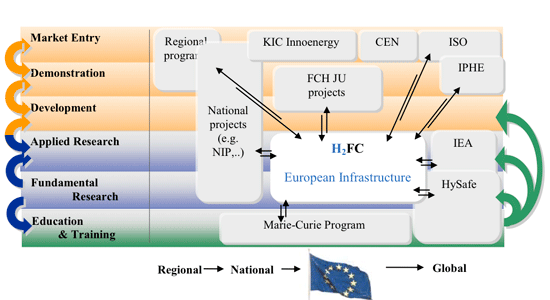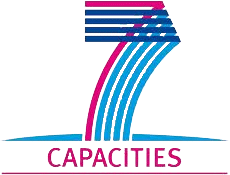H2FC in General
H2FC Access
H2FC News
H2FC Member Area
Latest update
Current SituationThe continuous decarbonisation of energy vectors and the need for efficient conversion processes and flexible energy storage will increasingly favour the usage of hydrogen and fuel cell technologies. The widespread adoption of hydrogen and fuel cell technologies will support the broader utilization of otherwise lost renewable energy, in particular sun and wind. Most of the accepted strategic documents support this expectation. The European Strategy Forum on Research Infrastructures (ESFRI), for instance, recognizes in its European Road map for Research Infrastructures (Report 2006) that "in the near future, hydrogen, as an energy carrier derived from a number of other fuels, and fuel cells, as energy transformers, are expected to play a major role, for both mobile and stationary applications".
However, hydrogen technologies including fuel cells currently do not reach the required cost and performance targets for an immediate and broad market introduction. Some safety aspects are still unresolved and public acceptance needs wider and more consistent information. A number of these issues are partially addressed by the Fuel Cell and Hydrogen Joint Undertaking (FCH JU), which mainly supports the demonstration of the currently available technologies. The implied (by the JU establishment) rearrangement of the European funding strategy is expected to positively stimulate the greater involvement of industry and commerce in the field. However, as the current state clearly shows and the demonstration efforts also highlight, there are still major open issues requiring further investigation. Thus much additional research work, both on the fundamental and applied levels, needs to be done. Without this research and development, the prospect of commercial success is pushed further into the future. ObjectivesThe main objective of H2FC European Infrastructure is to generate a structured and integrated alliance based on complementary, state-of-the-art, or even beyond state-of-the-art unique infrastructures to serve the needs of the scientific hydrogen and fuel cells community and facilitate future research. In more detail, H2FCEuropean Infrastructure general aims can be summarised as follows:
Positioning of H2FC European Infrastructure:
|







